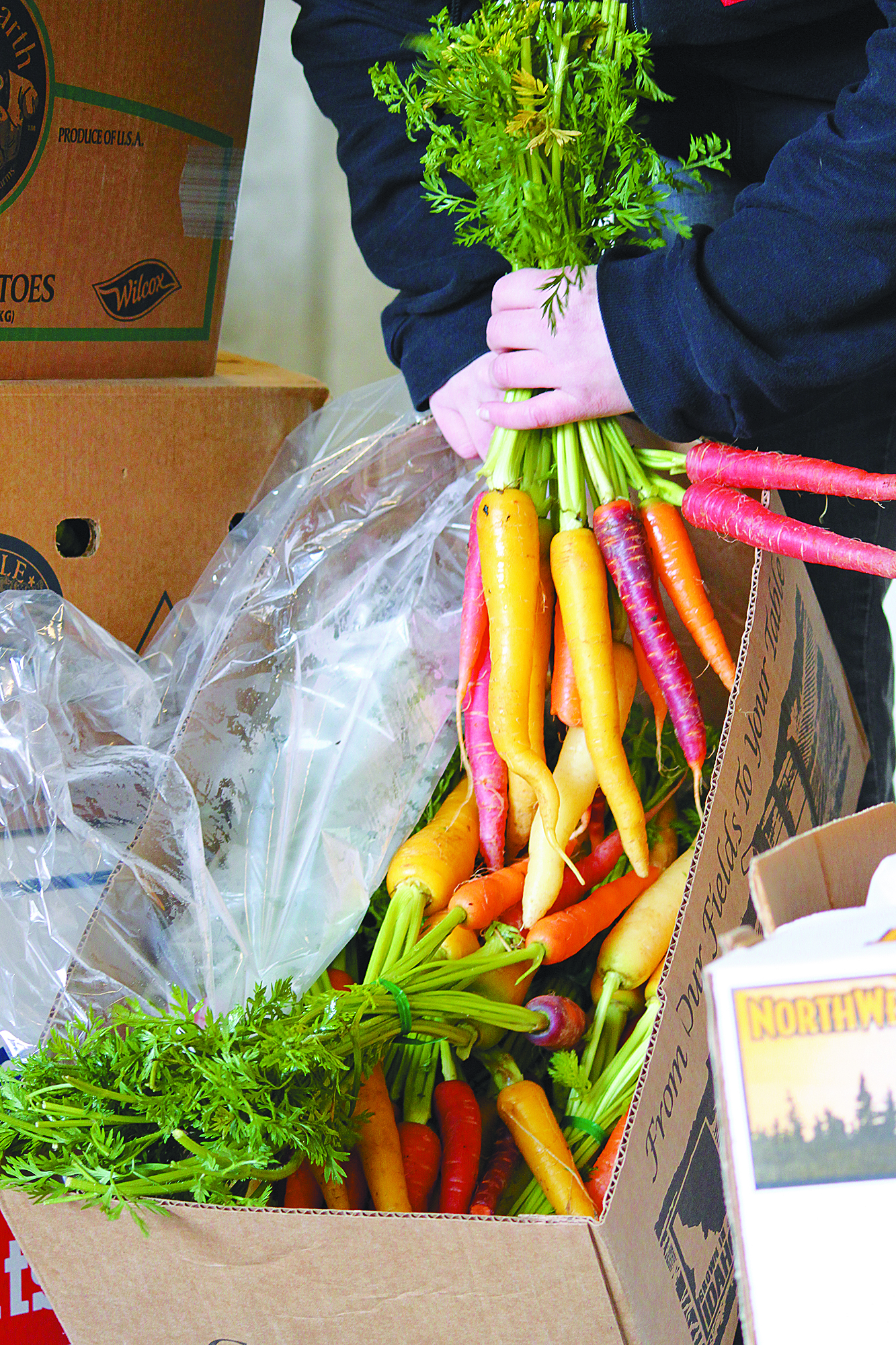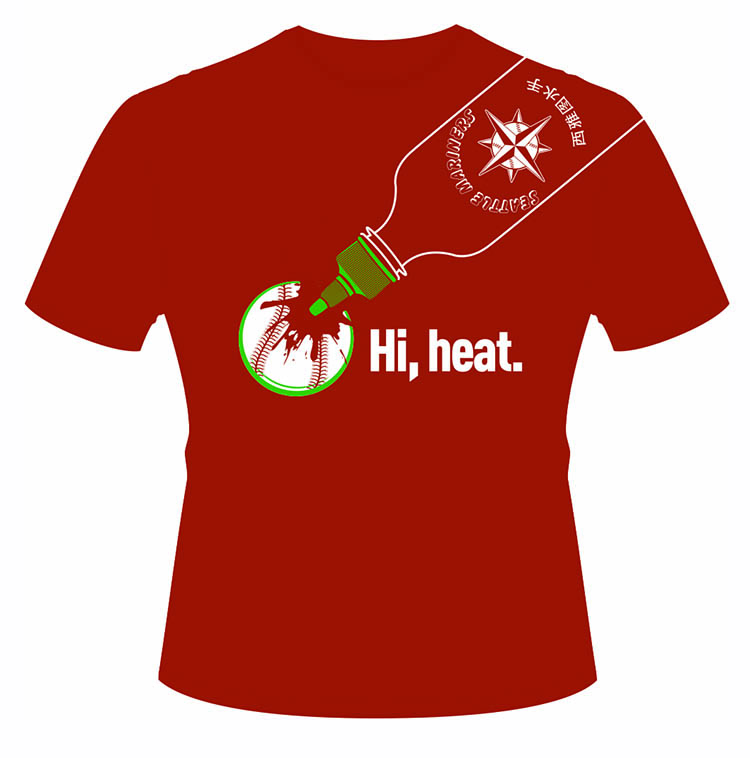On a recent visit to Whole Foods, I had my pick of pears from Argentina, California, and Washington—in the middle of our state’s harvest season. Why? Why do I need to choose between a pear that has traveled over 6,000 miles to Seattle or one grown an hour away? It makes no sense.
The food-distribution system in this country is broken. The supply chain bringing your farm products to market is cost-effective only for big enterprises. While semi-trailers, cargo ships, and airplanes move produce and meat all over the planet, small farmers are often relegated to driving small trucks to get products to local markets. They don’t get to play with the big boys.
Enter food hubs—which are not a new concept. Essentially, they are aggregation and distribution points created for small farmers to get their products to new markets and customers. And they are picking up steam as consumers increasingly demand local products. They are also becoming more popular with small farmers as they look for ways to break into new markets—without sacrificing profit margins through heavy transportation costs and middlemen.
As USDA Secretary Tom Vilsack stated in a May 2013 press release, “Skyrocketing consumer demand for local and regional food is an economic opportunity for America’s farmers and ranchers. Food hubs facilitate access to these markets by offering critical aggregation, marketing, distribution, and other services to farmers and ranchers. By serving as a link between the farm or ranch and regional buyers, food hubs keep more of the retail food dollar circulating in the local economy.”
Putting its money where its mouths are, the USDA recently announced a plan to fund a $52 million program to support local and regional food systems like farmers’ markets and food hubs and to spur research on organic farming. The Feds are seemingly in support of an expanding local, sustainable food system—or at least are putting on a good show.
Kai Ottesen of Hedlin Farms. Photo by Harley Soltes
A few years ago, a bunch of farmers and buyers convened under an overpass in Skagit County to transact their business. This clandestine operation was the start of what became the Puget Sound Food Hub (PSFH) in 2013. Lucy Norris, director of the PSFH and marketing director for the Northwest Agriculture Business Center (NABC), helped create this marketplace. She worked with NABC to get a value-added producer grant (given to agricultural producers aggregating or enhancing the value of raw products) from the USDA to start a formal food hub in partnership with 21 Acres, a Woodinville-based nonprofit learning center focusing on organic agriculture.
Working with Robin Crowder, marketing and development director at 21 Acres, they expanded the marketplace over the past three years to support farmers from Whatcom, Skagit, Snohomish, King, and Island counties, and have gone from being open 11 weeks a year to nearly year-round.
I spoke with Crowder about the drivers behind the advent of the Hub. “Farmers were already seeing the market for local was changing and demand for local food was improving. We were hearing from farmers that they didn’t know about how to reach people outside of farmers markets, and that every restaurant account had 10 other farmers competing with them.”
So Norris and Crowder went to work on building a better business model. Their goal was simple: to make it easier for farmers and buyers to connect so that buyers will always know their farmers and where they are getting their food from—all while improving the overall Puget Sound economy. Who can argue with that?
As they learned about the marketplace, Norris had the idea to broaden it beyond traditional consumers and restaurants. So they developed a relationship with United General Hospital in Sedro-Woolley, which wanted to increase its local food budget. The Food Hub was a perfect partner.
Norris says, “We had talked to several buyers, and they were weary of the hassles of reaching out to lots of farms, writing dozens of checks, cutting PO’s, etc. Many customers didn’t want to go through that hassle, and were ordering through a distributor hoping what they were getting was local.”
The PSFH has expanded its relationships with hospitals and institutions over the past few years. One of their biggest clients is UW Medical Center in Seattle. I spoke with Chuck Zielinski, director of food and nutrition, about the Center’s work with the Hub. His own department questioned its role as part of the Center’s mission to improve the health of their patients, staff, and community. Zielinski states that the Center wanted to “create partnerships with farmers which gives their programs credibility while rewarding small farmers for going the extra mile in growing organic produce—a win-win for both of us.”
Austin Becker delivering 1000+ pounds of organic blueberries from Bow Hill Blueberries to Microsoft. Photo by Robin Crowder
Hub Customers run the gamut: from hospitals, businesses like Microsoft, child-care centers, and restaurants to the City of Seattle (which established a grant to support child-care centers in purchasing from the Hub). One major client is food-service provider Bon Appetit Management Company, which orders in bulk for the Hutch, Amazon, Seattle University, and the Gates Foundation.
Currently 37 producers are registered to sell, with nearly 300 registered buyers. “Customers wanted to order from multiple farms, pay one invoice, and pick up… in a single location,” Norris adds. “We saved one chef about four hours every week.” Hub staff also works with customers and farmers to share feedback and information about farming practices.
This year has brought major change to the operations of the Food Hub. A new e-commerce platform was implemented earlier this year, making it easier for farmers to offer their goods and for customers to one-stop-shop online—a huge benefit for both. In addition, the Hub recently established a partnership with Cloud Mountain Farm Center in Everson, Wash., to facilitate the aggregation and distribution of farm products for Whatcom and Skagit counties.
Harley and Susan Soltes, owners of Bow Hill Blueberries in Bow, Wash., have been key supporters of the Hub since 2013. Not only are they suppliers, they provide facilities for aggregation and delivery three days a week—plus they manage the e-commerce platform. When I asked Harley about his experience working with farmers using the Hub, he tells me that “Drive time savings is amazing due to shared transportation. Farmers are appreciative of newly opened markets with big corporate and institutional customers who wouldn’t order from smaller farms but are now able to through the Hub.”
Boxes of vegetables for the Hub. Photo by Robin Crowder
One of the primary reasons farmers use the Food Hub is the economics of the operation. The farmer determines prices—the Hub has nothing to do with it. They pay 10 percent of the sale price to the Hub plus 3 percent for credit-card processing fees. For 13 percent of the sale price, a farmer eliminates significant costs in marketing, sales, and distribution. Grants and private foundation donors offset the balance of operational costs for the Hub with an additional 10 percent contribution.
Supply-chain efficiency is another obvious benefit. Ethan Schaffer is the executive director at Viva Farms incubator in Mt. Vernon, which helps new farmers learn how to farm and experienced farm workers establish their own business. I ask him about the benefits of using the Hub, and he points out both the supply-chain and online capabilities. “It makes sense for the food hub to run the supply chain and to pass this aspect of business off to someone who’s focused on logistics,” Schaffer says. “The use of online platforms is very new in the produce world. Even with big distributors, most sales are still done over the phone or person-to-person. The PSFH adds that capability for us.”
Farmers looking at their current marketing mix are giving the Food Hub strong consideration. Norris says, “Maybe they’ve done a CSA program and are seeing a decrease in subscriptions. Maybe some farmers markets haven’t done so well. That’s where we help to enable them to meet the needs of customers that they wouldn’t otherwise have.”
Eating locally is both a choice and a necessity if we are to support small-scale, sustainable agriculture as well as improve the local supply chain. If money is the language business listens to, then consumers must vote with their dollars to effect change. If demand for local meat, dairy, and produce increases, the system will change to support it. Capitalist businesses always follow the money.









